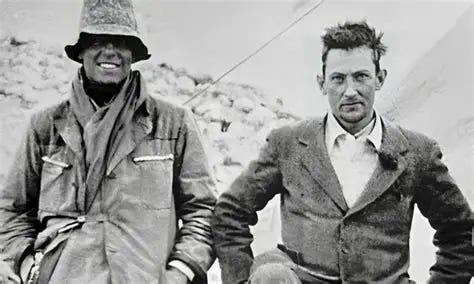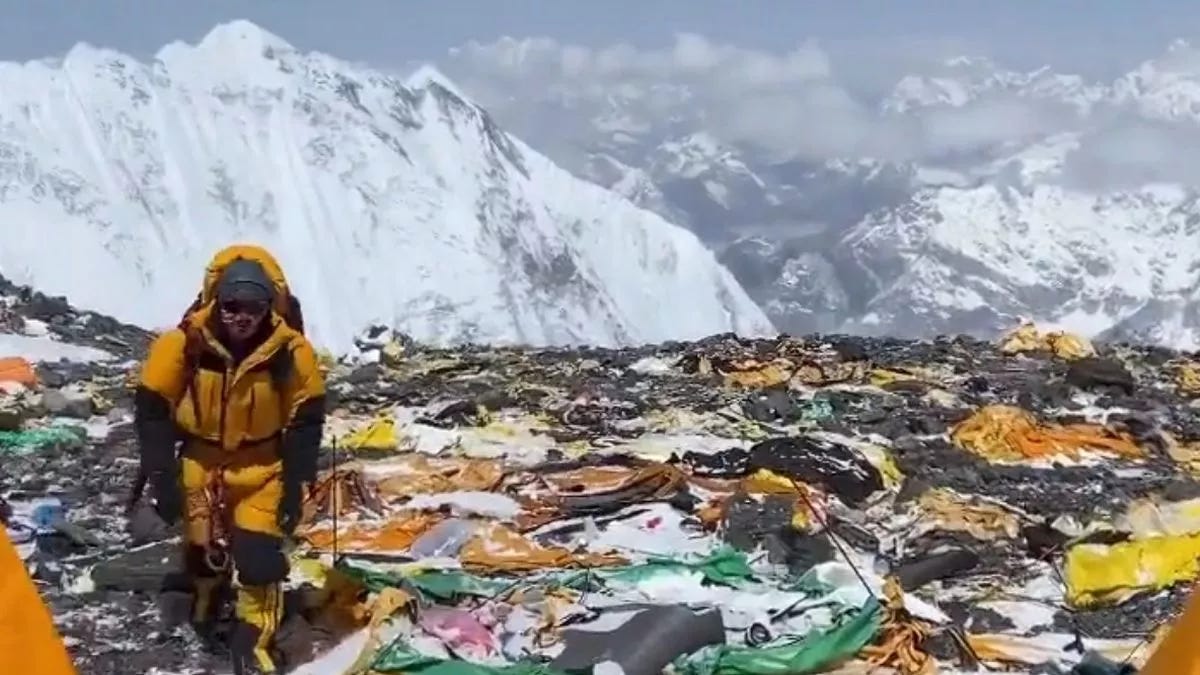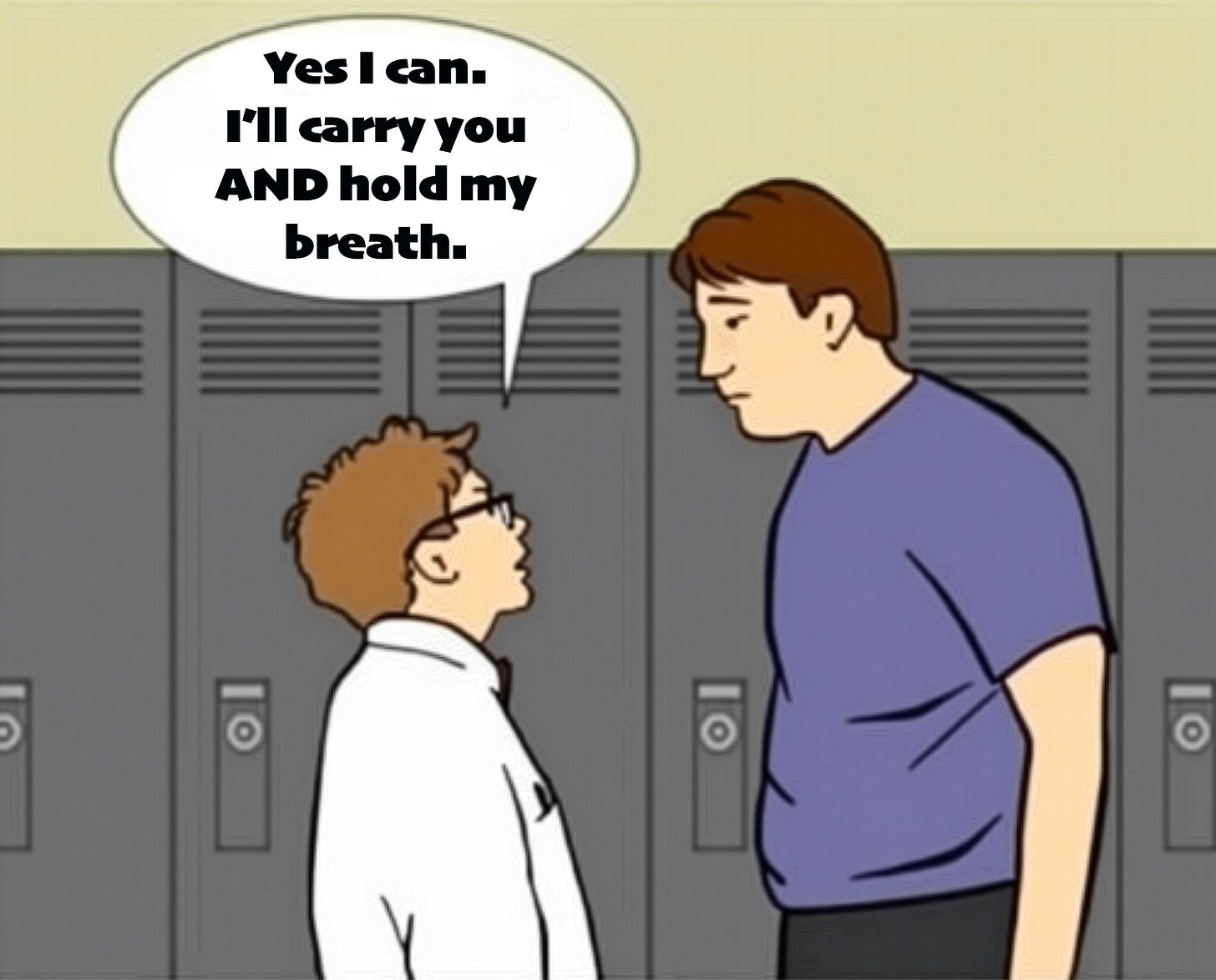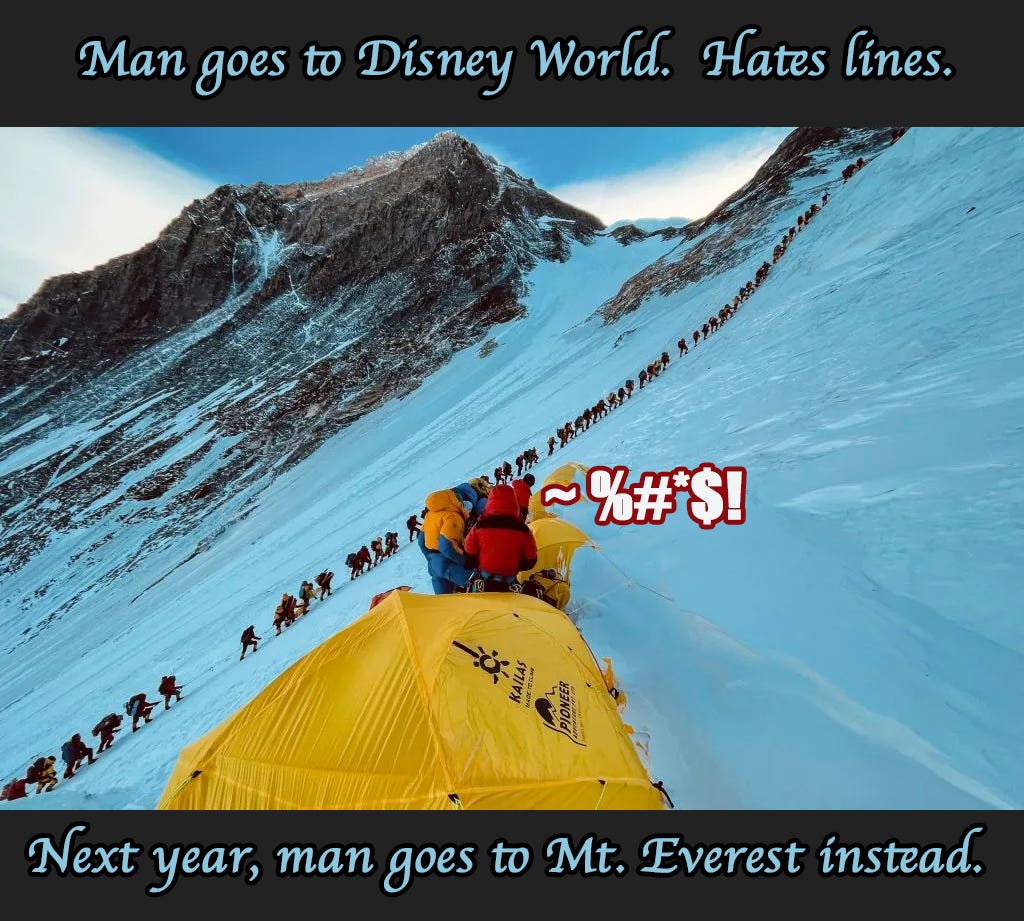Towering 29,031 feet, Mt. Everest enjoys a line of site view into the cockpits of commercial jets at cruising altitude. Nothing organic endures at this height. The portion of the mountain extending beyond 26,247 feet is referred to as the “death zone”, a name earned without hyperbole.
Oxygen levels in the death zone plummet to 39% that at sea level, so low that cellular function begins to deteriorate. During the May climbing season, temperatures peak at a balmy 14°F with biting winds that can reach 179 mph. Frostbite can occur within seconds to exposed skin.
Thirteen ill-fated expeditions to conquer the highest peak on earth took place prior to the first successful summit in 1953. One such attempt in 1924 was led by famous British explorer George Mallory who died in the infamous death zone along with his climbing partner Andrew Irvine. Evidence suggests that Irvine fell first, violently snapping the tandem rope tied between he and Mallory. In the hostile climate, the margin for error is too thin to forgive such a mishap.
Andrew Irvine (left) and George Mallory (right), Mount Everest base camp, 1924.
Records show that at least 340 other people have shared the same fate as Mallory and Irvine, many of whom are still superficially entombed by snow and frost on the mountainside. Some are visible to climbers today actively seeking to summit. A harsh presage for the unprepared.
As of 2025, estimates suggest 7,585 individuals have successfully climbed Mt. Everest, most of whom within the past two decades. Virgin ground with wonderous potential has been replaced with a trodden path pocked by landmarks and experienced sherpas pointing the way.
Once a place few dared to go, the base camps at Everest now demonstrate what humanity looks like without waste disposal and decay to erase our environmental sins. Everyone’s trash, even the chewing gum spit into the snow, is preserved indefinitely until it becomes someone else’s problem.
Still, climbing Mt. Everest is far from a trivial thing, requiring a motivated individual to invest 60 – 75 days for the journey and acclimatization process. The 4.5% fatality rate is highly discriminating, targeting the most unprepared.
Upon reaching the death zone, conventional morality gives way to ‘better you than me’ ethics as it becomes impossible to carry the smallest additional weight, let alone another body.
It takes eight experienced climbers to rescue an unconscious person with a window so narrow that most are not alive by the time the effort is organized. Many who succumb are left where they inhaled their last breath of insufficient air. Any who protest are asked to carry a coworker up a few flights of stairs while breathing through a straw. We all know someone who thinks they can do it.
Over committed climbers become so fixated on reaching the summit they ignore opportunities to save a life. Not even the pleas of a dying kindred spirit can divert the ravenous ego.
This indifference to life and sanctity of nature have contaminated the majesty of the mountain, changing how we perceive the goal of summiting Everest and those who pursue it.
Such it is with scaling a mountain of money. A few who clamor to the peak do so with an amoral compass, ignoring opportunities to serve along the way. Others attempt to short-circuit the process through gimmickry and scheme, polluting commonly held values and the hard work of others.
High profile abuses, like preserved trash, give the appearance that this is the exception rather than the norm. We are tempted to discredit all high achievement as grift, or worse, dull our own ambitions to discourage scrutiny.
The reality even harsher than the climate of the Everest is most will never step foot at its base. Many want the view, but few take the arduous steps required to see it. And if we do, and if we make it to the top, will this bring us any purpose? Perhaps. But we all can’t fit at the same time.
The melancholiest of stories belong to those who attempt to summit, ignorant to their incompetence but desperate to reach the sun. Valuable lives thrown to the frozen winds with little to gain and everything to lose. A parlay gamble on volatile conditions and questionable skill with unlimited downside.
There are too many people today making levered economic bets with their lives on bad information. Know thy self and know thy risks. Recognize that survival of the fittest is merely survival. There’s more to life than peak performance.
I imagine the most successful expeditions to any summit are those that foster the closest bonds and long-term relationships. It’s certainly difficult to do that when stepping over companions in need.
Climbing your Everest is a worthwhile goal, admirable even. Just don’t be surprised when you realize how cold and hostile it can be at the top. It’s not something that should be endeavored alone.
Advisory services offered through National Wealth Management Group, LLC. Nothing in this newsletter should be construed as investment or financial advice specific to any one individual. Seek professional guidance for advice specific to your situation.






